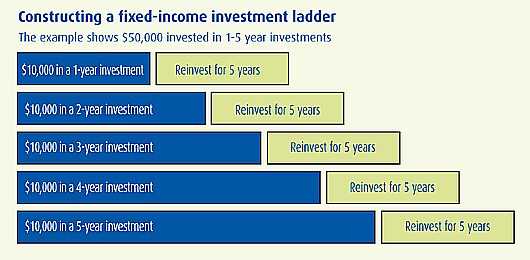Climbing the Ladder How to Manage Risk in Your Bond Portfolio
Post on: 25 Апрель, 2015 No Comment

The stock market crash of October 1987 was highly dramatized in the media. But during that year, more money was lost in long-term bonds and bond funds than in stocks.
Interest rates fluctuated widely throughout the year, then rose dramatically by the end of that year. This caused the bond market to lose significant value.
Why?
When interest rates rise, market values of existing bonds drop because their interest rates are fixed and the present value of the bond’s stream of interest payments fluctuates. These factors caused investors to panic and sell their bond funds, leaving fund managers with no choice but to sell these long-term bonds at depressed prices as a way to generate cash for redemptions.
THE RISKS
The 1987 bond market crash dramatically illustrates the market price risk of fixed bonds and bond funds. However, there are actually four main risks inherent in every bond and bond fund:
- Credit riskthe risk that bond issues will not be able to pay the income or principal,
It is possible to control credit risk through research and diversification, and income tax risk can be controlled by investing in tax-free bonds or using a tax-deferred account.
But it is impossible to simultaneously master market price risk and reinvestment risk of fixed coupon bonds. That’s because there is a trade-off between the two investments that can reduce market price risk have higher reinvestment risk, and the investments that can reduce reinvestment risk tend to have higher market price risk.
Market price risk, for example, can be reduced by owning a short-term CD or a money market fund because the market price stays constant. However, reinvestment risk is high because upon maturity your money must be reinvested, possibly at lower rates. In addition, yields on short-term bonds are relatively low compared to long-term bonds, so each time you reinvest in short-term bonds, yields tend to be lower than that of longer-term bonds.
Reinvestment risk can be reduced through investing in long-term zero-coupon bonds, because reinvestment of all payments is put off until maturity, but a zero-coupon bond has substantial market price risk.
The best you can do is to strike a balance between reinvestment risk and market price risk.
How, then, can fixed-income investors strike this balance, achieving a respectable rate of return without experiencing the higher risk associated with the fluctuation of interest rates?














